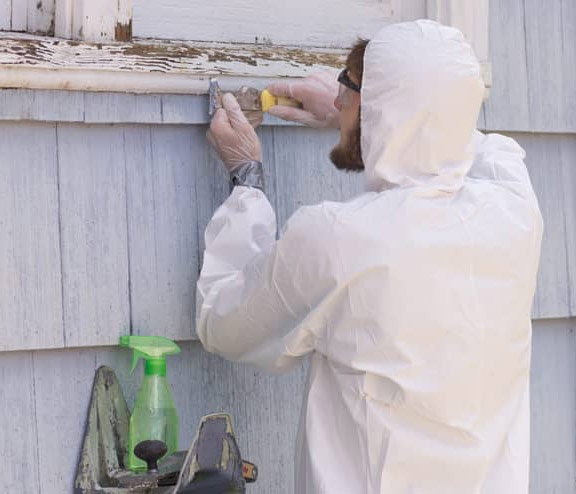Step-by-Step Refine for Effective Lead Violation Removal
Following this, adherence to federal and state policies is extremely important to creating a reliable removal plan. The actual removal needs experienced employees to implement these strategies while strictly adhering to safety protocols. What occurs after the remediation is completed?

Detection and Analysis
Discovery and evaluation are critical action in the removal of lead violations. To ensure an effective remediation procedure, it is crucial to conduct a complete evaluation of the atmosphere where prospective lead exposure exists. The first phase of detection involves recognizing resources of lead contamination, which can be discovered in paint, pipes, soil, and dust. Using sophisticated analysis devices such as X-ray fluorescence (XRF) analyzers and atomic absorption spectroscopy (AAS) can give accurate dimensions of lead focus.
This consists of evaluating the extent and seriousness of contamination, as well as identifying populations at threat, especially youngsters and expectant ladies. The collected information need to be diligently recorded to support the advancement of an effective remediation method.
Furthermore, it is vital to prioritize locations with the highest possible degrees of contamination and those that present the greatest health and wellness threats. Effective communication with stakeholders, including building proprietors, locals, and public health and wellness authorities, is essential for ensuring that all celebrations are notified about the findings and the succeeding actions required for removal. This initial detection and assessment phase lays the groundwork for a successful lead infraction removal procedure.

Lawful and Regulatory Conformity
Navigating the landscape of lawful and regulatory conformity is a pivotal facet of successful lead infraction remediation. Conformity makes sure not only the security of afflicted populations however additionally the reputation and lawful standing of the organization in charge of removal. Regulations regulating lead contamination are multifaceted, incorporating government, state, and regional laws. At the federal degree, the Epa (EPA) establishes stringent requirements under the Harmful Compounds Control Act (TSCA) and the Lead-Based Paint Remodelling, Repair Service, and Paint Policy (RRP Policy)
State and neighborhood regulations can differ, often enforcing added commitments or even more strict requirements. As a result, a detailed understanding of all relevant lawful structures is essential. This entails careful documentation of all remediation tasks to demonstrate conformity. Failing to comply with these policies can lead to severe penalties, including large penalties, legal action, and reputational damages.
Engaging legal specialists focused on ecological law can assist in browsing these intricacies. Routine training and qualification for all employees associated with the remediation process are likewise mandatory to make certain adherence to security and regulatory standards. By focusing on lawful and regulatory compliance, companies can efficiently mitigate dangers and attain an effective removal result.
Planning the Remediation
Efficiently intending the removal of lead violations begins with a detailed evaluation of the infected website. This data-driven approach makes sure that remediation efforts are properly targeted and effective.
Once the contamination is mapped, a risk analysis need to be performed to examine prospective health and wellness dangers to humans and the environment. Lead Violation Removal in NYC. This assessment needs to take into consideration elements such as direct exposure pathways, populace susceptability, and ecological effects. The insights collected will certainly form the basis for selecting an appropriate remediation technique
Subsequently, establishing clear, possible objectives for the removal task is essential. These goals need to line up with regulative standards and stakeholder assumptions to make sure compliance and area acceptance. Creating an in-depth remediation plan that describes techniques, timelines, and source appropriation will promote a structured approach to the cleanup process.
Furthermore, it is necessary to engage with stakeholders early and maintain clear communication throughout the preparation phase. This includes notifying neighborhood communities, acquiring needed permits, and collaborating with regulatory companies to ensure all lawful and procedural needs are fulfilled. A well-crafted removal strategy not just resolves the contamination efficiently however additionally constructs count on and participation amongst all parties involved.
Performing the Removal
With a well-structured removal plan in position, the focus changes to the real execution of the removal activities. This phase entails setting in motion the needed resources, consisting of experienced personnel, customized devices, and high-quality products. Begin by clearly marking roles and obligations to make sure liability and smooth sychronisation amongst employee.
This includes establishing up navigate to this site control areas to avoid lead dust and particles from spreading, as well as utilizing air purification systems to keep air quality. Utilize approaches such as wet scratching, chemical removing, or encapsulation, depending on the severity and location of the contamination.
Throughout the remediation process, conduct routine evaluations and air high quality keeping track of to guarantee conformity with regulatory standards. Efficient communication with stakeholders, consisting of homeowner and occupants, is vital to maintain them informed of progress and any kind of unforeseen growths. By meticulously adhering to these steps, the removal activities can be executed successfully and efficiently, eventually mitigating lead dangers.
Post-Remediation Approaches
Post-remediation techniques play a vital duty in making sure the lasting success of lead offense removal initiatives. These strategies encompass ongoing tracking, upkeep, and community education and learning to protect against a knockout post future lead direct exposure and make certain a risk-free setting.
First, routine surveillance is important. This includes routine testing of the previously influenced areas to make certain that lead levels remain within safe restrictions. Homeowner should establish a routine for these examinations, preferably in collaboration with certified environmental professionals.

Third, informing the community plays a critical role in maintaining the advantages of removal. Locals and residential property supervisors need to be notified about the risks of lead exposure and the best practices for keeping a lead-safe setting. Workshops, educational handouts, and community conferences can be efficient devices for sharing this details.
Conclusion
Effective lead offense remediation needs a thorough, methodical technique encompassing detection and evaluation of contamination, adherence to lawful and regulatory requirements, precise preparation, and reliable execution of remediation initiatives. This methodical procedure underscores the go value of thoroughness and vigilance in resolving and reducing lead contamination.